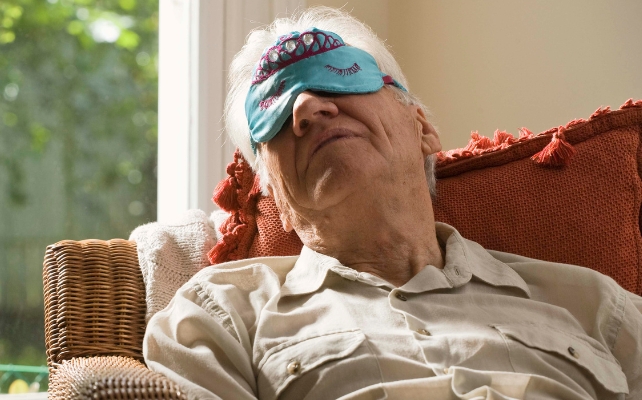Regular, short snoozes keep our brains young by preserving volume, a quality linked with healthy cognitive functions and a lower risk of dementia and other diseases.
Scientists from the US, UK, and Uruguay analyzed data from 378,932 people aged 40 to 69 to see how those who are genetically 'programmed' to nap regularly fared cognitively compared to those who lacked comparable genes.
Nappers, they found, had larger brains, equivalent to those who were 2.6 to 6.5 years younger.
"Our study points to a causal link between habitual napping and larger total brain volume," says lead author Valentina Paz, a neuroscientist at University College London (UCL).
Previous research on adults over the age of 65 suggests daytime dozing improves short-term cognition, with nappers outperforming non-nappers in cognitive tests. The new study didn't record nap length, but prior studies suggest naps under 30 minutes are best, with earlier naps less likely to affect nighttime sleep.
Napping has gained positive and negative attention recently, and the question of whether regularly taking forty winks is good or bad for cognition is a complex one.

Response time and memory decline most throughout aging, and cognitive impairment is common in the elderly, so Paz and her colleagues say identifying modifiable risk factors like sleep patterns is important.
"The association between napping and brain volume is not well characterized," the team writes in their published paper, "even though almost a third of older adults nap, and reductions in brain volume are more common in older adults."
One of the authors of the paper led a previous study that used data from the UK Biobank on self-reported napping to identify the genetic variants influencing our propensity to nap. Sensors worn on the wrist recorded measurements of physical activity to verify the self-reported data.
The new research analyzed health and cognitive outcomes for individuals carrying these genetic variants, as well as several subsets, but importantly the data was adjusted to avoid potential bias. For example, researchers didn't consider individuals carrying a variant linked to excessive daytime sleepiness.
Genetic data and brain scans were available for 35,080 individuals, so the researchers looked at brain volume and 92 sections of DNA that have been linked to propensity for regular daytime kips and performed an analysis using Mendelian randomization.
This approach can help guide medical, public health, and genetic decisions by identifying genes already understood to have some health effect, allowing researcher to identify other effects likely to be influential in observational studies. Used in this context, the analytical tool helps reduce potential biases from other associations between napping and health benefits.
"This is the first study to attempt to untangle the causal relationship between habitual daytime napping and cognitive and structural brain outcomes," says Paz.
In their self-reports, 57 percent had said they "never" or "rarely" took a nap during the day, while 38 percent said they did so "sometimes" and 5 percent "usually."
But "usually" midday nappers had factors that might influence health if not accounted for, like older age, smoking, diabetes, and cardiovascular disease.
"By looking at genes set at birth, Mendelian randomization avoids confounding factors occurring throughout life that may influence associations between napping and health outcomes." Paz explains.

Mendelian randomization found the people who were predisposed to napping had brains that were 'younger' when it came to brain volume as a measure of age.
Predetermined nappers brains were on average 15.8 cubic centimeters (0.96 cubic inches) larger, and the estimated average difference in brain volume was equivalent to between 2.6 and 6.5 years of aging.
"For some people, short daytime naps may be a part of the puzzle that could help preserve the health of the brain as we get older," says senior author Victoria Garfield, a genetic epidemiologist at UCL.
Of course, total brain volume is only one association, and the researchers say that surprisingly they found no difference between nappers and non-nappers in three other measures: volume of the hippocampus (an area of the brain critical to forming memory), reaction time, or visual processing.
"While this is a well-conducted study, it does have limitations," says neuroscientist Tara Spires-Jones from the University of Edinburgh, who was not involved in the research.
"Even with those limitations," adds Spires-Jones in a published expert reaction, "this study is interesting because it adds to the data indicating that sleep is important for brain health."
The authors acknowledge that all participants were of White European ancestry which limited the generalizability of the study's findings, and they suggest future studies should investigate other age groups too, using randomized control trials.
The self-reporting is another limitation, although napping is difficult to measure in other ways, and the matching wrist sensor data does increase the team's confidence in the accuracy of the reports.
Still, learning more about the impact of napping on the brain is especially useful to aid prevention and treatment of cognitive impairment in our aging population.

"I hope studies such as this one showing the health benefits of short naps can help to reduce any stigma that still exists around daytime napping," says Garfield.
Consider this your official green light to take a siesta today.
The study has been published in Sleep Health.
